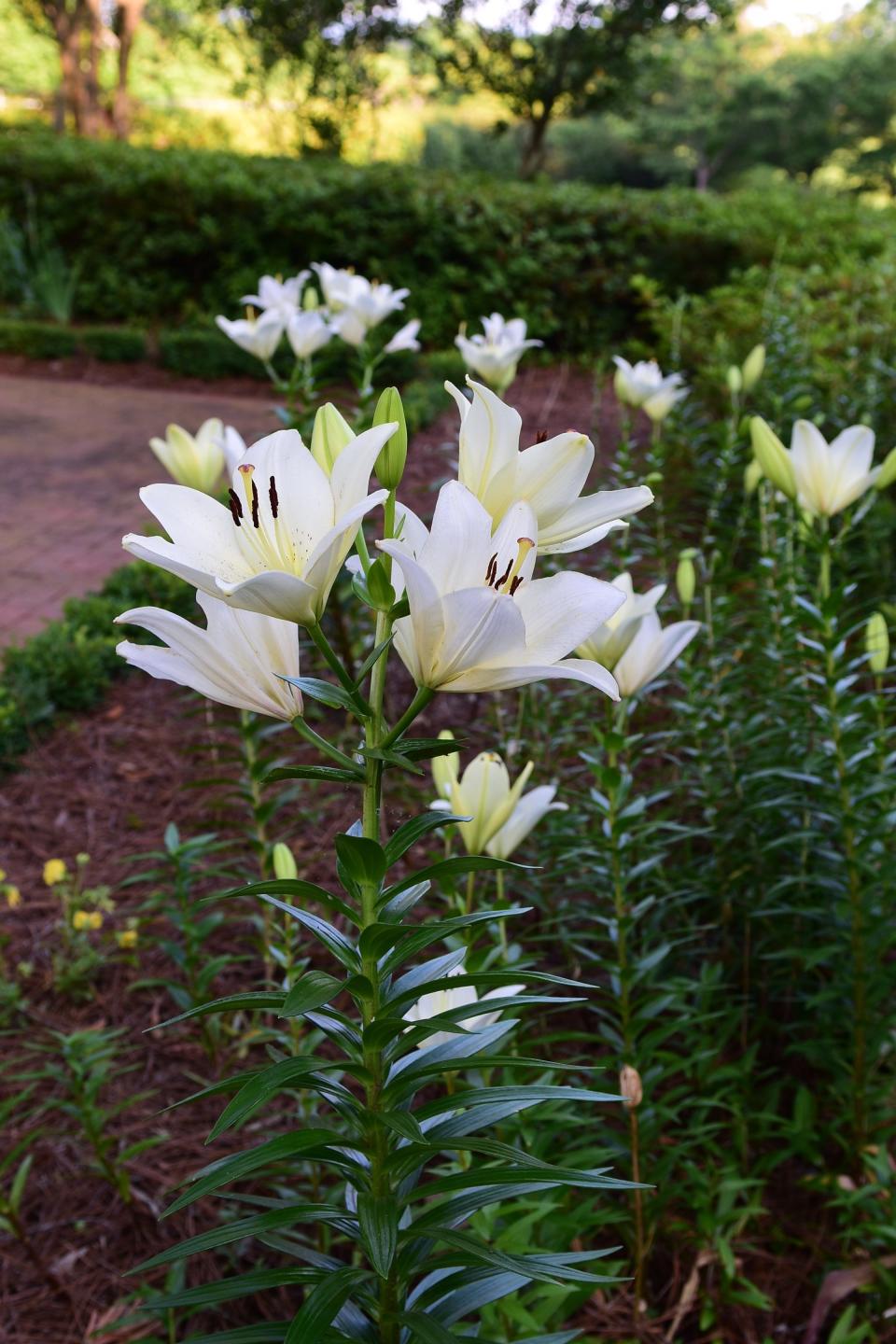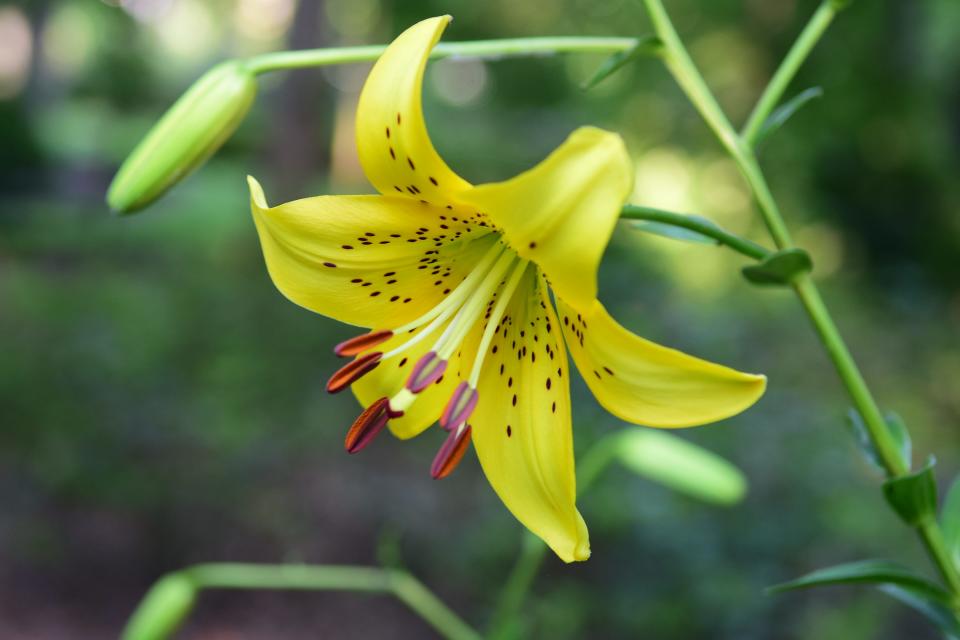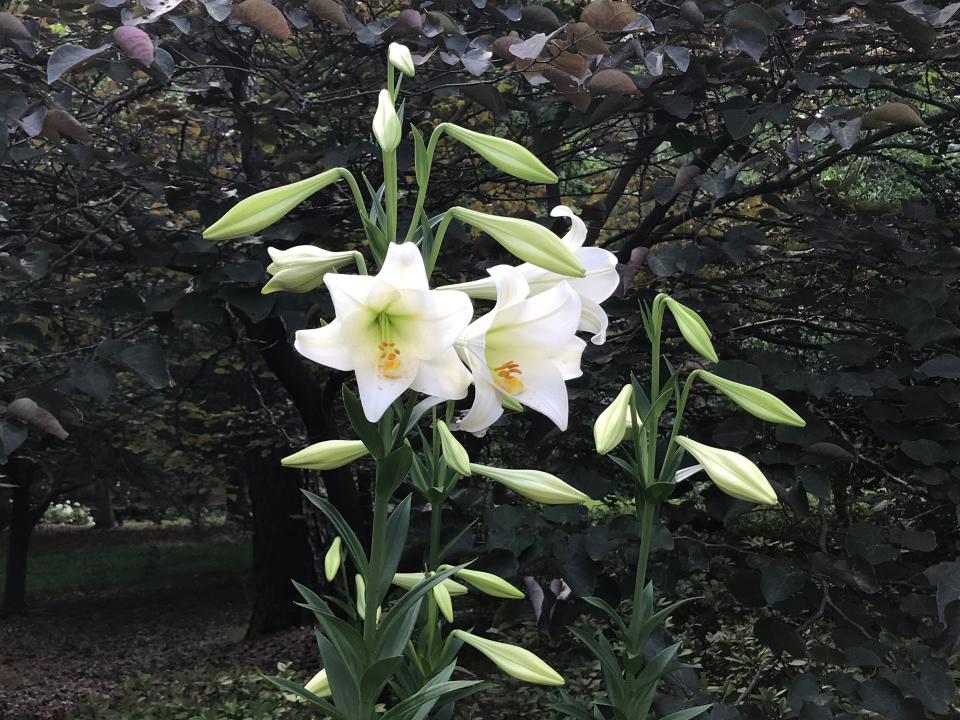Lilies bring color and fragrance to the garden
What a joy it is to see the lilies breaking the ground this time of year. It makes me realize it will not be long before I have an abundance of lovely flowers. There are many different kinds of lilies and over the years, I have added a few more here and there to have some lilies blooming most of the summer months. The perfusion of color and fragrance they exude gives me great delight as they adorn my summer garden.
Now, I am not talking about daylilies; I am talking about true lilies, the genus ‘Lilium’. There are a number of plants that are called lilies; daylilies, calla lilies, peace lilies, toad lilies, voodoo lilies, stink lilies, surprise lilies, etc. These are not true lilies. They are all interesting plants and I love to grow many of them but I really love the true lilies and since there are many different ones, if you choose one of several different kinds, you too could have some blooming most of the summer.
Of the ones I grow, Asiatic lilies are the first to bloom. These lilies are hybrids that are bred from several other lilies. They have no scent, something many people associate with lilies. They come in a rainbow of colors; pink, orange, yellow, red, cream, white and lavender. They grow from 2 to 5 feet tall from scaly bulbs and have an outward or upward-facing flower. There are also some double Asiatic lilies that have an extra set of petals. I have seen these but have not grown them, well not yet.

Next to bloom are the martagon hybrids. The first lily I ever planted was in the group and I was told it was a called Turk’s Cap Lily. It was orange with whimsical freckles and spots and they grow to about three feet tall. I also have another one, Pearl Jennifer Tiger Lily that is really pretty. This old-fashioned favorite is a rich, canary yellow color that is highlighted with numerous large spots. There are other varieties that can bear up to thirty flowers on a stem that are enchanting too.

Never throw away your Easter Lilies. These large white trumpet-shaped flower that are mostly grown at Easter are Lilium longiflorum. These are forced to bloom at the appropriate time for the Easter season. Now, after they finish blooming, take care of the plant and when the weather warms, plant it outside at the same level as it was in the container and leave the foliage to die naturally.

If you are looking for the most fragrant lilies, Oriental lilies are known for their beauty but also for their fragrance. Oriental lilies will fill an entire garden with their intoxicating perfume… well depending on the size of the garden or course. There are many different varieties and they come in shades of white, yellow, pink, rose or raspberry. Probably the most planted oriental hybrid lily is the flat-faced ‘Stargazer’, which is the most successful cut flower along with ‘Casa Blanca’.
I finish the season with species lilies or wild lilies. The familiar wild tiger lily falls into this division as does one of my very favorites, rubrum. These are native to Asia and have been widely naturalized in North America. Wild lily species are highly adaptable since they come from such varied climates; swampy jungles, frigid mountains and habitats in between.
Planting lilies
When I am ready to plant, I chose a spot that will have good drainage which for me is usually an area with a little slope. I turn and amend the soil with composted leaves. It is important that the bed where I plant lilies will be well drained and not a place where too much water will accumulate, never by a sprinkler head or in a low place. They tend not to flourish in heavy clay soils, and if the roots get soggy, they will rot. If you have trouble with drainage, plant them on an incline or a raised bed. Lilies grow well in pots too. Plant so the top of the bulb is 6 to 7 inches below the soil line. (Follow the planting directions that come with the bulbs). Lilies look best when they are planted in clusters of 3 or more bulbs so that they make a show.
Purchase bulbs as close to the time that you are going to plant them. You want fresh bulbs, not older ones that have dried out. I plant mine in the fall so the roots can get established but if you live in a very cold harsh climate, plant lily bulbs in the spring, after the last frost, when they will appreciate the warmer ground.
Lilies adorn the garden but also look beautiful in a vase. In fact, they’re one of the world’s most popular cut flowers. If you want to grow your own lilies for cutting, remember that cutting a stem of flowers will remove most of that bulb's foliage. The foliage that remains is what gives the bulb the energy to have a pretty flower the following year. When I cut a flower to bring inside, I do not cut as long a stem as you see for sale as cut flowers. Do not cut more than a third of the foliage.
Now I must warn you that deer love lilies, maybe as much as I do. They tend to eat the tops of the plant. Voles also love them. I have one area where I sink a pot in the ground to prevent them from eating the bulb.
Spend sometime this summer deciding what lilies you want to order to plant this fall. You too might get hooked on these beautiful flowers.
Betty Montgomery is a master gardener and author of “Hydrangeas: How To Grow, Cultivate & Enjoy,” and “A Four-Season Southern Garden.” She can be reached at bmontgomery40@gmail.com.

This article originally appeared on The Fayetteville Observer: A look at the many different kinds of lilies

